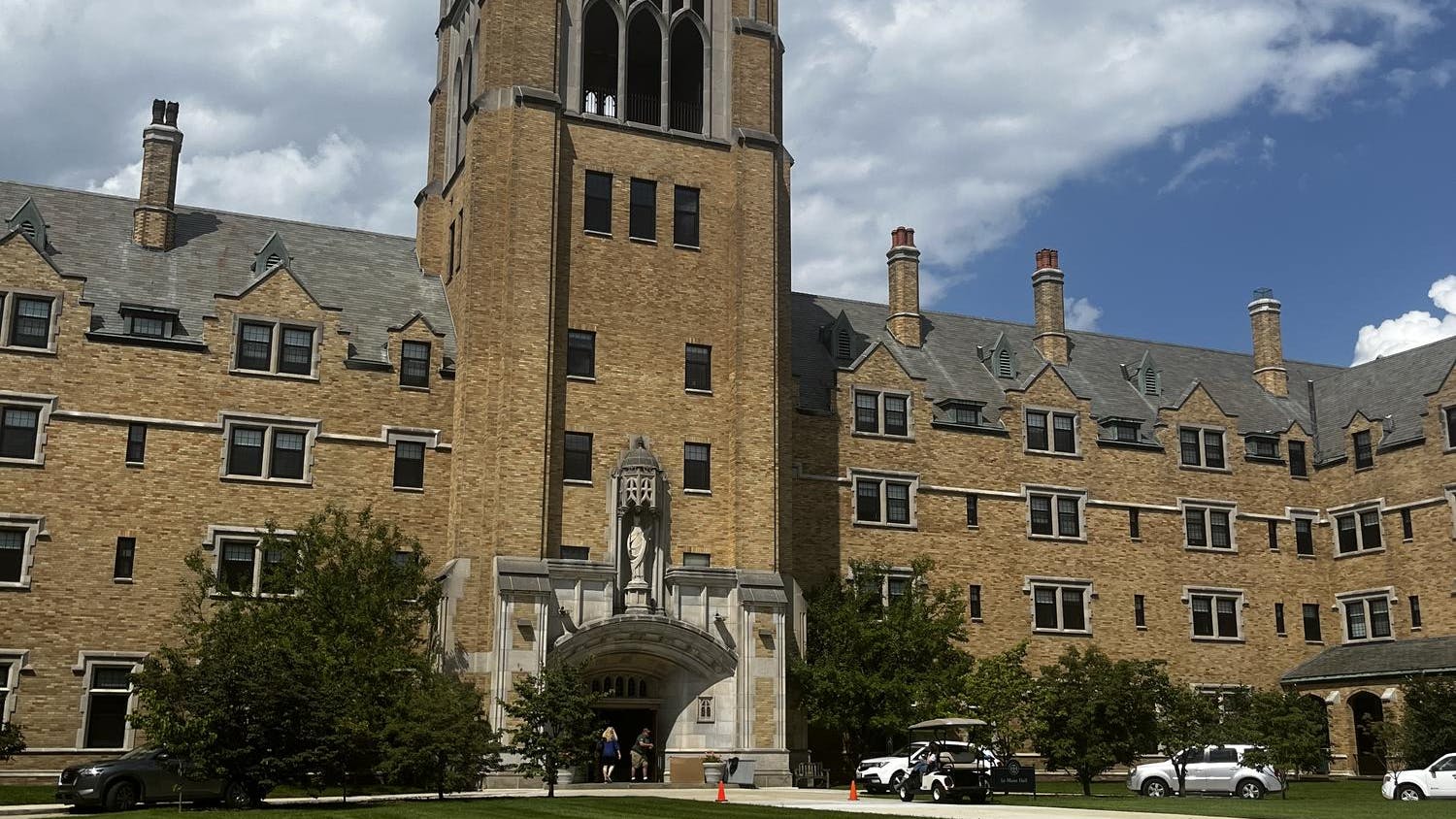Late-night student transportation on campus is about to get easier and safer as a result of the Student Nighttime Auxiliary Patrol (O’SNAP), the first major policy initiative from junior student body president Lauren Vidal and vicepresident Matthew Devine.
Vidal said the program will utilize two new four-person golf carts, complete with hard doors, seatbelts, heating, radio and a safety beacon, to supplement and possibly replace the Safewalk program.
“We’re all very open to the idea of [O’SNAP] possibly and hopefully replacing Safewalk in the future,” Vidal said. “In terms of increased efficiency, it’s just going to create a whole other level. Safewalk has done a fantastic job over the years, but we really hope that this is kind of going to be an amp up, and it will essentially encompass what nightly escort means on campus.”
Vidal said the funding for the project, totaling $31,760 (approximately $16,000 per cart), came from excess money allocated for the 2013-2014 Coccia-Joyce administration, so the this project’s finances will not infringe upon student government’s budget for the upcoming school year. She said the Financial Management Board unanimously approved the funding at a meeting Tuesday evening.
Vidal said the new service will act primarily as a late night responsive taxi service for students if they do not feel safe or do not want to walk back to their dorms in inclement weather.
“These vehicles will kind of serve as a taxi service for students, so they will be a response team,” she said. “They’re not for abuse, [though]. They’re not for people who are like ‘Oh, I’m too lazy to walk to main circle.’ But really when it’s cold or really late at night, it would be a service for students to use.”
NDSP Sergeant Tracy Skibins said both Safewalk and O’SNAP place a primary emphasis on student safety and going forward, she said she hopes O’SNAP will be a more popular, widely used system.
“The current Safewalk program and the new proposed program both have safety as the [number one] goal,” Skibins said. “Getting students from one part of campus to another, safely. The main difference between the current program and the new program is that the new program should be more efficient and more easily accessible. We also hope that it will become popular and more students will want to utilize it, and use it more often.”
Devine said the program is a tangible way to help fight violence and sexual assault and continue the work of student body president emeritus Alex Coccia and vice president emeritus Nancy Joyce.
“Alex and Nancy made great headway with the One is Too Many Campaign and we thought this would be a way to not only popularize a service that’s already on campus, but really contribute to students feeling safe,” he said.
Student government director of gender issues freshman Kristen Loehle said after researching similar transportation systems at other schools, she believes O’SNAP will help create a safer campus environment.
“I think O’SNAP will be effective in reducing the occurrence of any type of late night violence, and it will help to maintain a safe night time environment across campus for now and the years to come,” she said.
Through this branding, student government director of constituent services junior Jack McKeon said the new program aims to be more readily accessible to all students.
“I think that with the right amount of exposure, the new program will be very successful,” McKeon said. “One of the main downfalls of the Safewalk program was that few people knew about it, and even fewer knew when and where they operated. With the new program we will ensure it will be easy to locate and contact."
Student government director of residence life junior Brent Murphy said increased use of the new program would also aid in creating a safer environment.
“I think that O’SNAP especially grew out of this feeling that if we could introduce changes to the program that would increase its use, then it could be an extremely effective tool in promoting safety on campus,” Murphy said. “And so far, everyone that has heard about the project has seemed to agree.”
Skibins said student government and NDSP still need to solidify the details of the program before its full implementation, but NDSP student employees will staff the new program, just as they do with Safewalk.
Vidal said student government will continue to work on the project over the summer and hope it will be fully operational for freshman orientation and the beginning of football season.
“We really want it to be available in the fall so we can show first-year students safety is a primary concern here, and so we’re addressing it and here’s how we’re doing it,” she said. “Hopefully it’s popular and it’ll be used a lot.”













